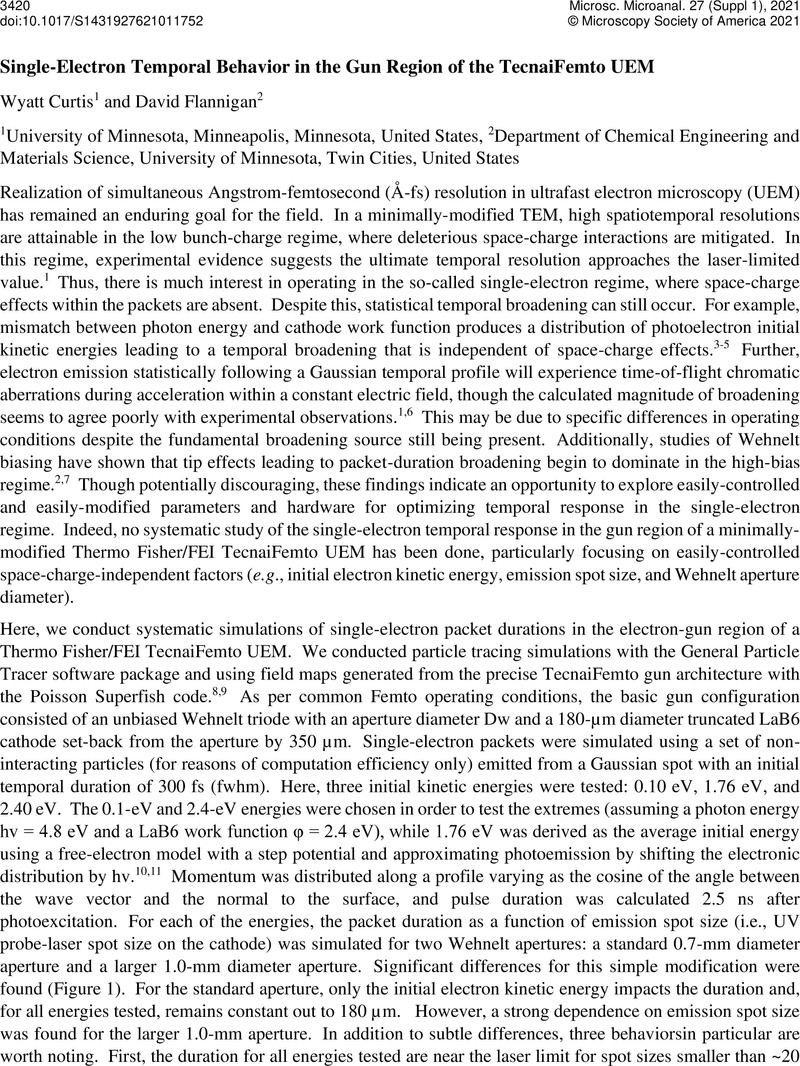No CrossRef data available.
Article contents
Single-Electron Temporal Behavior in the Gun Region of the Tecnai Femto UEM
Published online by Cambridge University Press: 30 July 2021
Abstract
An abstract is not available for this content so a preview has been provided. As you have access to this content, a full PDF is available via the ‘Save PDF’ action button.

- Type
- Fast and Ultrafast Dynamics Using Electron Microscopy
- Information
- Copyright
- Copyright © The Author(s), 2021. Published by Cambridge University Press on behalf of the Microscopy Society of America
References
Aidelsburger, M., et al. Proc. Natl. Acad. Sci. U.S.A. 2010, 107, 19714-19719.CrossRefGoogle Scholar
De Loos, M. J.; Van der Geer, S. B. General Particle Tracer: A New 3D Code for Accelerator and Beamline Design. Proceedings of the European Particle Accelerator Conference, Sitges (Barcelona), Spain, June 10-14, 1996, p. 1241.Google Scholar
We thank Erik Kieft for assistance with modeling the Tecnai Femto architecture and ensuring accurate electrostatic field maps were generated. This material is based on work supported by the U.S. Department of Energy, Office of Science, Office of Basic Energy Sciences under Award No. DE-SC0018204. This material is based upon work supported by the National Science Foundation Graduate Research Fellowship Program under Grant No. DGE-1839286. Acknowledgment is made to the Donors of the American Chemical Society Petroleum Research Fund for partial support of this research.Google Scholar





